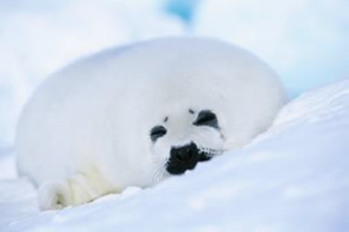Seals are hunted in various parts of the world for commercial, subsistence and cultural reasons. In general, this does not endanger their populations.
However, EU citizens expressed concerns about animal welfare aspects of seal hunting. At the time, several EU countries were considering, or had already introduced, national laws to ban the import and use of fur skins and other seal products.
The EU seal regime, put in place in 2009 and amended in 2015, introduced a general ban on the placing of seal products on the EU market in response to these concerns.

Objectives
The Trade in Seal Products Regulation prohibits the placing of seal products on the EU market, with two exceptions.
Law
In 1983, the EU adopted the Seal Pups Directive (Council Directive 89/370/EEC), prohibiting the import into the EU of products from harp and hooded seals. It does not apply to products derived from traditional hunting by Inuit communities.
Since 2009, the Regulation on Trade in Seal Products (Regulation (EC) No 1007/2009) has prohibited the placing of seal products on the EU market. The Regulation was amended in 2015 (by Regulation (EU) 2015/1775) to reflect the outcomes of World Trade Organization rulings in the EC-Seal products case.
The trade ban applies to seal products produced in the EU and to imported seal products, with two exceptions.
The placing on the EU market is allowed for seal products that qualify under the “Inuit and other Indigenous communities” exception, provided several conditions are fulfilled and these products are accompanied by an official document attesting their origin. This is because seal hunts traditionally conducted by the Inuit and other indigenous communities contribute to the subsistence of these communities and as such, do not raise the same public moral concerns as seal hunts conducted primarily for commercial reasons.
The second exemption allows the import of seal products where it is of an occasional nature and consists exclusively of goods for the personal use of travellers or their families.
Fitness Check of EU rules
In May 2024, the Commission launched a Fitness Check of EU rules on trade in seal products. The Fitness Check is still ongoing, but a factual summary of the public consultation results and call for evidence is already available on the Have Your Say portal.
The detailed Fitness Check Report, a Commission Staff Working Document and an Executive Summary will be published on this page in the first half of 2025.
The Fitness Check findings will inform the Commission as to whether any amendments to the current legal framework are needed. The Commission does not intend to weaken the protection level currently given to seals.
Implementation
An Implementing Regulation (Commission Implementing Regulation (EU) 2015/1850, replacing Commission Regulation (EU) No 737/2010) provides for the recognition of government bodies mandated to certify compliance with the conditions for benefiting from the "Inuit and other indigenous communities” exception, and issue the attesting documents that should accompany the seal products.
The following bodies have been recognised so far:
The recognised bodies may place a QR code, which links to this webpage, on the seal products that they certify.
For more information, read the Factsheet on EU rules on trade in seal products (available in all EU languages).
The Implementing Regulation also allows EU Member States to designate their competent authorities.
Reports on the implementation of the EU Regulation on Trade in Seal Products
The Commission's four-year reports to the European Parliament and the Council are based on the reports submitted by the EU Member States and the recognised bodies in Canada and Greenland. The first Commission Report was adopted in 2020 and the second in 2023.
Remark: In Finland and Sweden, the quotas are set for a hunting season and not by calendar year. The hunting season starts in autumn and ends the following year in spring. In the second Report, the number of seals hunted in Sweden corresponds to the hunting season, and therefore also includes the autumn of 2018 and the spring of 2023. After the publication of the Report, Sweden communicated the number of seals hunted per calendar year for the period 2029-2022. These numbers are shown in the graph below.
Publications
Factsheet on EU rules on trade in seal products
Assessment of the potential impact of a ban of products derived from seal species (April 2008)
Study on implementing measures for trade in seal products (January 2010)
Study analysing the trade in seal products in the EU and worldwide in follow-up to the adoption of regulation (EC) No 1007/2009 and its implementing provisions (September 2012) and its Appendix D tables on enforcement and penalties (September 2012)
Related links
Main law: Trade in Seal Products Basic Regulation
Related law: Seal Pups Directive
Related topics: Nature and biodiversity, Wildlife trade
Related strategies: Biodiversity strategy for 2030
Related Commission priorities: European Green Deal
Contact
For questions about EU environmental policy, please contact Europe Direct.






